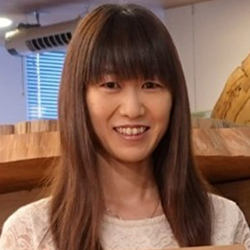
Suyako Tazuru, Ph.D., (田鶴寿弥子 博士)
Junior Associate Professor, Laboratory of Material Biology, Research Institute for Sustainable Humanosphere, Kyoto University
京都大学生存圏研究所講師
履歴
京都大学農学部卒。京都大学大学院農学研究科修了、京大博士(農学)取得。京都大学生存圏研究所ミッション研究員、助教を経て、現在京都大学生存圏研究所講師。2021年第13回京都大学たちばな賞(優秀女性研究者賞)における優秀女性研究者奨励賞を受賞。主に文化財を中心とした木製品の樹種調査とデータベース構築、学際研究などを行ってきています。
Education
- 2011 PhD, Agriculture, Kyoto University, Kyoto, Japan
- 2007 Master of Agriculture, Kyoto University, Kyoto, Japan
- 2004 Bachelor of Agriculture, Kyoto University, Kyoto, Japan
Employment
- Lecturer (July 2022-present), RISH, Kyoto University
- Assistant Professor (2011-2022), RISH, Kyoto University
- Engaged in wood identification and identification of wood cultural heritages and interdisciplinary research on wood.
主な出版リスト
(著書)
- 2022. ひとかけらの木片が教えてくれること 木材×科学×歴史 [What a Piece of Wood Can Teach Us: Wood x Science x History]。淡交社 (Kyoto: Tankosha)
- 日経新聞・産経新聞・朝日新聞・読売新聞・週刊文春・地方誌などで紹介されました。
(最近の文化財関連論文)
- 2022. Suyako Tazuru, Mechtild Mertz, Takao Itoh & Junji Sugiyama. "Wood Identification of Japanese and Chinese Wooden Statues Owned by the Museum of Fine Arts, Boston, USA". Journal of Wood Science 68 (11).
- 2022. Mechtild Mertz, Suyako Tazuru, Shiro Ito & Cynthea Bogel. "A Group of Twelfth-Century Japanese Kami Statues and Considerations of Material Intentionality: Collaborative Research Among Wood Scientists and Art Historians". Journal of Asian Humanities at Kyushu University (JAH-Q),127-158.
- 2021. Suyako Tazuru, Mechtild Mertz, Hiromi Kinoshita, Takao Itoh & Junji Sugiyama. "Wood identification of Chinese Buddhist statues in the Philadelphia Museum of Art". 文化財科学 [Scientific Studies on Cultural Properties], 83, 109-119.
- 2021. 田鶴寿弥子 (Suyako Tazuru) & 杉山淳司 (Junji Sugiyama). 重要文化財裏千家住宅保存修理工事における部材の樹種識別調査 [Wood Identification of Tea Rooms in the Urasenke Residence Designated as an Important Cultural Property]. 木材学会誌 [Mokuzai Gakkaishi], 67, 1, 20-32.
- 2020. 喜多祐介 (Yusuke Kita), 田鶴寿弥子 (Suyako Tazuru), 竹下弘展 (Hironobu Takeshita) & 杉山淳司 (Junji Sugiyama). 近赤外分光法と多変量解析を用いた建築用材の識別とその汎化性能向上 [Classification of Wood Species Frequently Used for Modern and Ancient Buildings Utilizing Near-Infrared Spectroscopy with Multivariate Analysis and Enhancement of Its Generalization Performance]. 木材学会誌 [Mokuzai Gakkaishi], 66, 3, 171-182.
- 2020. Sung-Wook Hwang, Suyako Tazuru & Junji Sugiyama. "Wood Identification of a Historical Architecture in Korea by Synchrotron X-ray Microtomography based Three-Dimensional Microstructural Imaging". Journal of the Korean Wood Science and Technology, 48, 3, 283-290, 2020.
- 2020. 田鶴寿弥子 (Suyako Tazuru). 重要文化財菅田庵及び向月亭ほか一棟保存修理工事事業における部材の樹種識別調査 [Important cultural properties: Kandenan and Kogetsutei -- A Research Report: Identification of Woods for Maintenance and Repair of Tea Huts]. 茶の湯文化学 [Journal of Chanoyu,], 35.
- 2019. 田鶴寿弥子 (Suyako Tazuru). 建造物保存修理工事における部材の樹種調査の現状 [Current Status of Wood Identification of Components in Building Conservation and Repair Work]. 建築史学 [Journal of the Society of Architectural Historians of Japan], 72, 34-43.
- 2019. Suyako Tazuru & Junji Sugiyama. "Wood Identification of Japanese Shinto deity Statues in Matsunoo-taisha Shrine in Kyoto by Synchrotron X-ray Microtomography and Conventional Microscopy Methods. Journal of Wood Science, 65.
- 2019. 田鶴寿弥子 (Suyako Tazuru), 松本康隆 (Yasutaka Matsumoto), 中山利恵 (Rie Nakayama), 杉山淳司 (Junji Sugiyama). 笛吹嘉一郎作芭蕉翁故郷塚「瓢竹庵」の樹種識別ならびに古文献内記述との比較検討 [Wood Identification of Basyo-ou Kokyo-zuka “Hyochikuan” Designed by Kaichiro Usui and Comparison between Results and Description in the Old Document]. 木材学会誌 [Mokuzai Gakkaishi], 65, 2, 110-116.
The Relationship Between Wood & People
As Seen Through Wood Materials Used in the Tea Ceremony Room:
Anatomy of Wood x Chanoyu
茶室の用材観から紐解く人と木とのあわい: 木材解剖学×茶の湯
ABSTRACT
時を経て今に伝わる木製文化財は、人と木が歩んだ歴史、環境、観念等を照らす鏡とも言えます。有機物である木は、経年によって劣化することは避けられず、木彫像や建造物では定期的に修理が行われます。そのような修理時に、専門家らにより得られる僅かな木片の樹種や年代を調査し、そこで得られたデータを、様々な学術分野と共有することで、深みのある、そしてこれまでにない視座からの研究成果をえることができます。
木材の樹種、つまり木の種類を明らかにする、というと、単に「材料」を明らかにするだけと思われがちですが、材料こそ当時の人々の文化交流や木材観、民俗学的視座を紐解く上で、重要な知見になります。特に、木を活用して文化を花開かせてきた日本人が、どのような観念で木の種類を選び取っていたのかを紐解くことは、人と木との関係追究に欠かせません。
発表者は、木材解剖学を軸に、考古学的・美術史学的・建築史学的資料などに向き合い、樹種や年代を調査してきましたが、中でも近年茶室に注目してきました。日本の建築史研究は神社や寺院を中心に行われてきたふしがありますが、日本文化、禅、陰陽道、その他様々な観念や思想の融合により形成されたと考えられる茶室は、日本特有の木の文化が最も象徴的に具現化されている一例とも考えられ、茶室の科学的な用材研究をすすめることで、新しい視座を建築史研究に付与できるのではないかと考えています。
これまでに国宝如庵をはじめ、様々な茶室の樹種調査を行ってきており、本発表では如庵をはじめとしたいくつかの事例紹介と茶室建築における用材認識についてご紹介したいとおもいます。
科学で文化財の樹種・年代を突き止め、用材認識という視座から見つめなおすことで、これまでは見えていなかった自然と人間との関係を考察することができます。直接的に人と木が結びついていたころの木材との関係性、そこには、未来を生きる人々へ伝えていくべき茶の湯における樹木観や用材観が詰め込まれていると感じます。本講演では、ささやかながら、木を顕微鏡で覗くことで見えてきた人と木との関係をご紹介したいと思います。
ENGLISH
Wooden cultural properties and artifacts that have been passed down through the ages can be viewed as mirrors that illuminate the history, environment, and ideas that people and trees have shared over time. Wood, being an organic material, inevitably deteriorates over time, and wooden statues and structures are regularly repaired. During such repairs, specialists investigate the species and age of the few pieces of wood obtained, and by sharing the data with specialists in various academic fields, results can be gleaned that lead to new and profound insights.
Although it is often thought that the identification of the species of wood, or the type of wood, merely reveals the "material," the material itself provides important insights into the cultural interactions of the people of the time, their views on wood, and their ethnographic perspectives. In particular, it is essential to understand how the Japanese people, who utilized wood to develop their culture, selected the types of wood they used.
I have been investigating the species and age of trees by studying archaeological, art historical, and architectural materials based on wood anatomy, and have recently begun focusing on tea rooms. While most architectural historical research in Japan has focused on shrines and temples, the tea ceremony room, which is thought to have been formed by the fusion of Japanese culture, Zen Buddhism, Yin-Yang philosophy, and various other schools of thought, can be considered one of the most significant embodiments of this unique Japanese wood culture. I believe that the scientific study of materials used in tea ceremony rooms will add new perspectives to the study of architectural history.
In this presentation, I would like to introduce some examples of tea ceremony rooms, including the National Treasure Jyo-an, and discuss the identification of wood species used in tea ceremony room architecture.
By determining the species and age of cultural artifacts through science and reexamining them from the viewpoint of wood species identification, we can discern a relationship between nature and humans that has not been made clear until now. The relationship between people and wood at the time when people were directly connected to trees and their views on the role of trees and lumber in the tea ceremony is something that is worth passing on to people living in the future. In this lecture, I would like to introduce the relationship between people and wood that has been gleaned through looking at wood under a microscope.